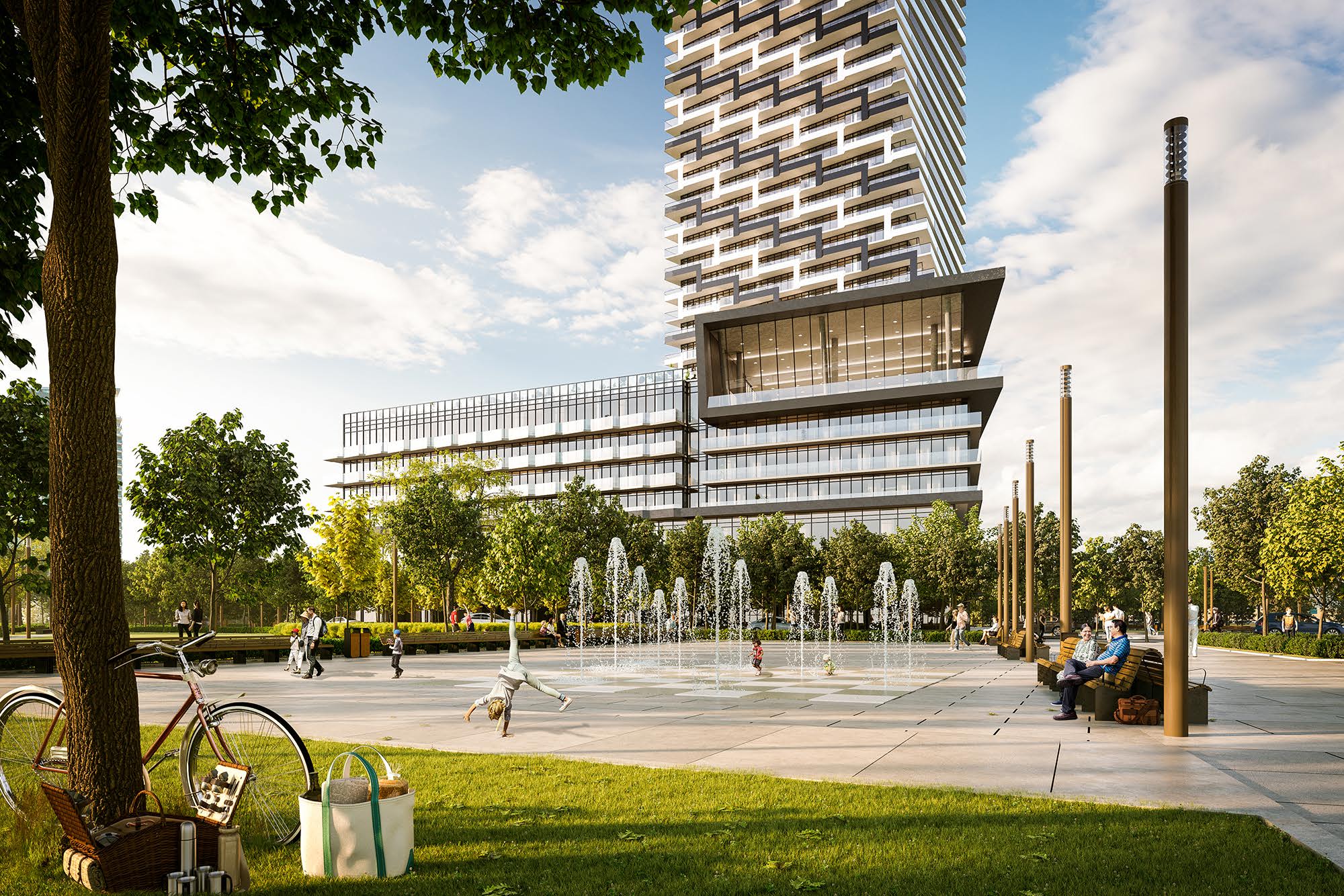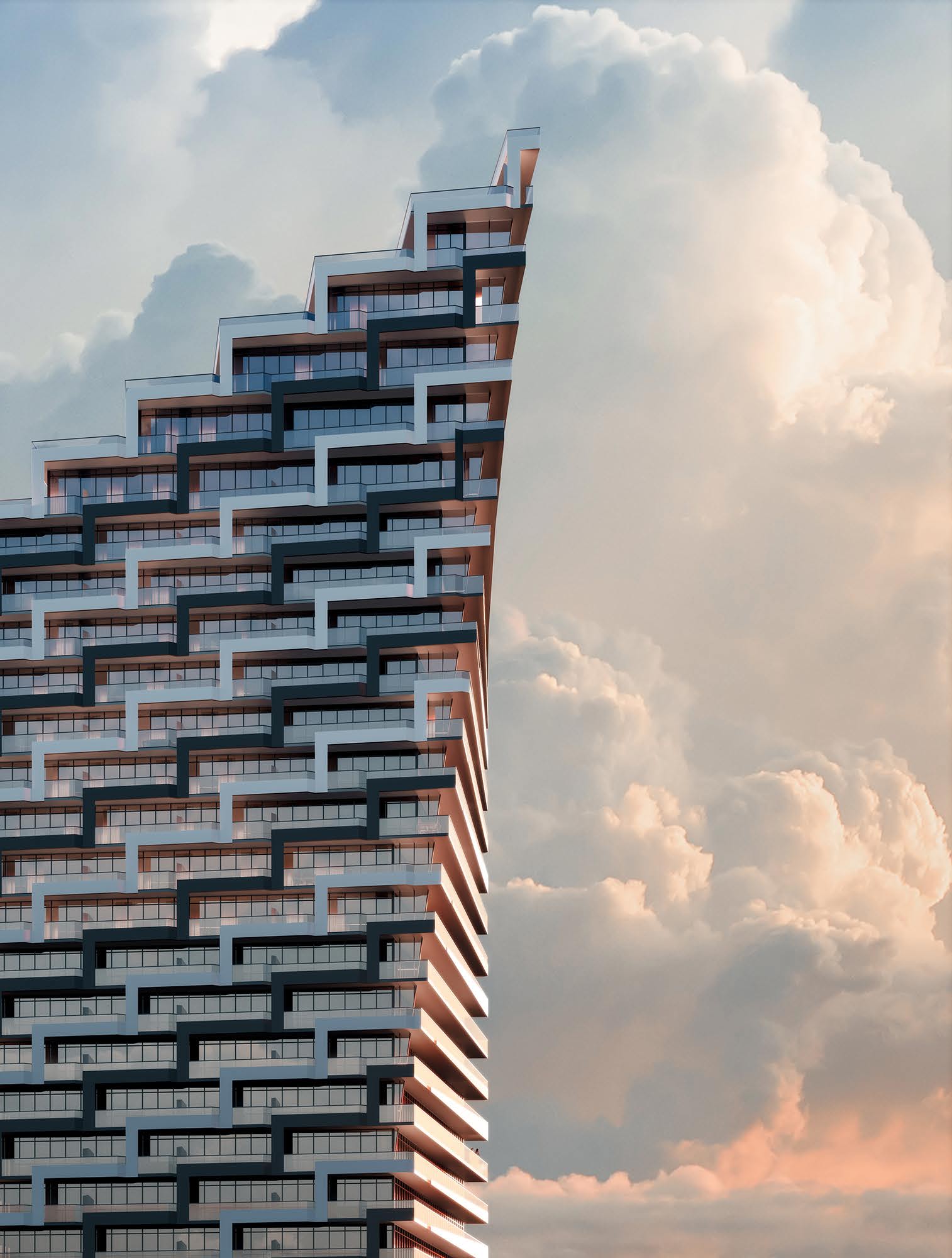Inside the engineering of an 83-storey landmark

Kevin MacLean, principal at RJC Engineers, spoke to Tanya Martins of Construction Canada about M3, an under-construction building at M City in Mississauga, Ont. At 83 storeys, the tower will be the tallest building in Mississauga and the tallest in Canada outside of Toronto. It marks a milestone in suburban high-rise development and sets a new benchmark for vertical living beyond Toronto’s core.
What were some challenges and highlights of the design and construction phase?
One of the biggest challenges was designing a tower of this scale in a suburban context. Unlike Toronto’s core, Mississauga did not previously have towers of this height, which meant zoning, wind, and urban integration strategies had to break new ground. Another challenge was sequencing construction on a sloped tower, co-ordinating with trades to construct floors corrected for the incremental leaning created by the sloped architecture.
A highlight for our team was topping off the structure and seeing M3 redefine Mississauga’s skyline. It represents not just an engineering accomplishment, but also a milestone in how suburban centres across Canada are evolving into true urban hubs.
What innovations are being used to keep the building efficient and safe?
Beyond the tuned mass damper, RJC conducted parametric analysis to vary wall thicknesses and concrete moduli to reduce the gravity sway caused by its sloped architecture. The northwest corner steps back 14 m (45 ft), creating one of the tallest sloped towers in the world. The building also incorporates a construction sequence strategy where gravity displacements (vertical and horizontal) are corrected out during construction to ensure floors are level.
What specific structural strategies are being applied at M3 to manage wind performance at 83 storeys, and how do they differ from typical high-rise solutions in Toronto’s core?
M3 will experience significant wind demand, comparable to taller towers in downtown Toronto, because it does not have the benefit of being shielded by other tall buildings. To address this, RJC Engineers designed an efficient yet robust lateral load resisting system and employed the largest tuned mass damper (TMD) in Canada, a 750-tonne (827-tons) device at the crown of the tower. The TMD acts like a pendulum, counteracting building sway to keep residents comfortable during both everyday winds and rare extreme events.
Can you explain the concept of tapered structural lean in M3, and why it was necessary for the tower’s design and stability?
M3’s signature profile slopes dramatically to the northwest, with the upper floors set back 14 m (45 ft) from the base. This tapering creates a bold architectural gesture that distinguishes the tower from conventional vertical forms. Structurally, it required an innovative approach, redistributing loads through thicker structural walls on one side and carefully engineering the lateral system to resist the additional overturning caused by gravity sway. The lean not only shapes M3’s iconic presence but also demonstrates how engineering can enable ambitious architecture without sacrificing safety or performance.
What makes podium integration particularly complex for a tower of this scale, and how did the team resolve those challenges?
The podium is not just a base for the tower; it houses retail, townhouse units, and a full amenity pavilion with an indoor pool and gym. This mixed-use programming created structural challenges, as the podium had to support both expansive public spaces above and multiple below-grade parking levels.
RJC worked closely with the design team to integrate large open spans, water features, and landscaped areas while ensuring durability and accessibility standards were met. Balancing the technical demands of a massive residential tower with the flexibility required for community-focused podium spaces was one of the project’s most complex but rewarding aspects.
Anything else you’d like to add?
M3 is more than just Mississauga’s tallest tower; it’s a benchmark for how Canadian suburbs are embracing vertical living. For RJC, the project demonstrates how advanced structural engineering can enable ambitious designs in new contexts, supporting city-building beyond Toronto’s core.
Kevin MacLean is a principal at RJC Engineers with extensive experience leading some of Canada’s most complex high-rise projects. At M3, he oversaw the structural design of the 83-storey tower, including the integration of one of the largest tuned mass dampers in the country and an efficient yet robust lateral load resisting system. This ensured safety, stability, and comfort in a landmark building redefining Mississauga’s skyline.




